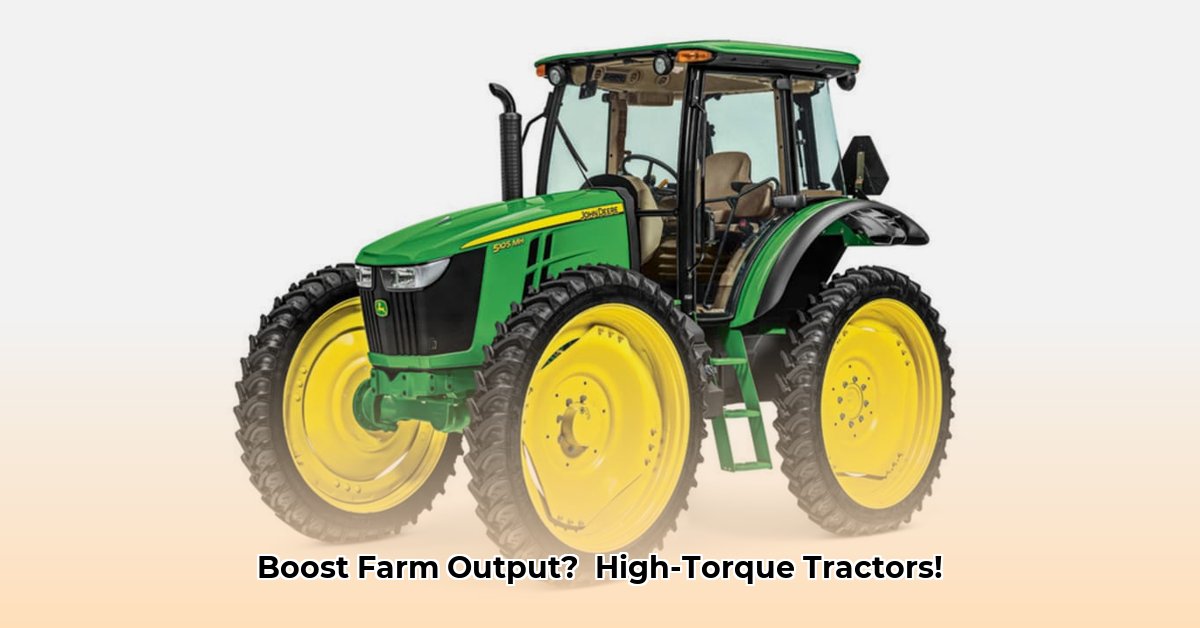
Choosing the right tractor is a critical decision for any farmer. This article delves into the often-misunderstood difference between horsepower and torque, exploring how these factors impact tractor performance and the selection process. We'll examine different engine designs, offer practical advice on choosing the right tractor for specific tasks, and discuss how modern emission standards are shaping the future of agricultural machinery. By the end, you'll be equipped to select a tractor that optimizes your farm's productivity and efficiency. For more options, check out these subcompact tractors.
Understanding the Power Play: Torque vs. Horsepower
Horsepower and torque are fundamental measures of a tractor's capabilities. Horsepower (hp) represents the rate at which an engine performs work—essentially, its speed. Torque, conversely, measures the twisting force or rotational force—the engine's muscle. While horsepower is often prioritized, torque is crucial for heavy-duty applications. A high-torque tractor effortlessly handles heavy loads and challenging terrain, even at lower engine speeds.
Think of it like this: horsepower is how fast a car can go, while torque is how much it can tow. A high-horsepower car may be fast in a straight line, but a high-torque truck can pull a heavy trailer up a steep hill. The simple formula connecting them is: Horsepower = (torque x engine RPM) / 5252. This highlights that torque at lower RPMs can be just as important as horsepower at high RPMs, especially in demanding agricultural situations. A high-torque tractor excels in heavy plowing where maintaining a lower gear is key to optimal pulling power.
Engine Design: The Shape of Power
Engine design significantly influences torque and horsepower characteristics. Two main types exist: undersquare and oversquare engines. Undersquare engines feature a longer piston stroke than their cylinder bore diameter. This creates a long, powerful push, resulting in high torque at lower RPMs. These are ideal for heavy-duty tasks like plowing or pulling heavy implements. Oversquare engines, conversely, have a shorter stroke and wider bore. They generate higher horsepower at higher RPMs, favoring speed and agility. However, they may lack the raw pulling force of undersquare engines at lower RPMs.
Turbocharging can significantly alter an engine's performance. By increasing the air pressure entering the engine, turbocharging boosts both horsepower and torque. This enhances the versatility of oversquare engines, making them suitable for both lighter and heavier applications.
Picking the Right Workhorse: Matching Tractors to Tasks
Selecting a tractor is akin to choosing the right tool for the job; both must align with their intended purposes. Therefore, matching a tractor’s power profile to your farm's demands is paramount. The following table provides a practical guideline:
| Task | Ideal Engine Type | Torque/Horsepower Emphasis | Considerations |
|---|---|---|---|
| Heavy Plowing | Undersquare, Multiple Cylinders | High Torque | Requires significant pulling power at lower speeds. |
| Tilling/Cultivating | Oversquare, Turbocharged | Balanced | Needs a blend of power and speed. |
| Hay Baling | Balanced | Balanced | Requires a balance of power and maneuverability. |
| Light Transport/Spraying | Oversquare, Turbocharged | Higher Horsepower | Prioritizes speed and efficiency for lighter loads. |
This is a general guideline. Specific needs—field size, soil conditions, and workload—influence the optimal tractor choice. Remember to consider overall build quality, reliability, and the importance of regular maintenance. It's a significant investment that will impact your efficiency for many years.
Modern Considerations: Efficiency Meets Power
Meeting modern emission standards compels manufacturers to prioritize fuel efficiency. This drives innovations in engine design and fuel systems, often enhancing efficiency but sometimes at the cost of raw power. The goal is to achieve a balance between high performance and sustainability. High-torque tractors are not exempt; fuel efficiency is critical given fluctuating fuel prices. Ongoing research aims to further improve fuel efficiency without compromising the robust power demanded by intensive agricultural tasks. Isn't fuel efficiency a critical concern for all farmers today?
Making the Right Choice: Your Farm's Unique Needs
The ideal high-torque tractor depends on your unique farming operation. Consider your primary tasks, budget, and future plans. A thorough assessment of these factors will ensure you select a tractor that maximizes your farm's productivity and long-term success. Don't overlook torque; it's the unwavering power that drives efficiency and profitability in agriculture. A well-matched tractor is a cornerstone of a successful and thriving farm operation. It’s a considerable investment impacting your operation's effectiveness for years to come. Do you have a solid grasp of your farm's needs?